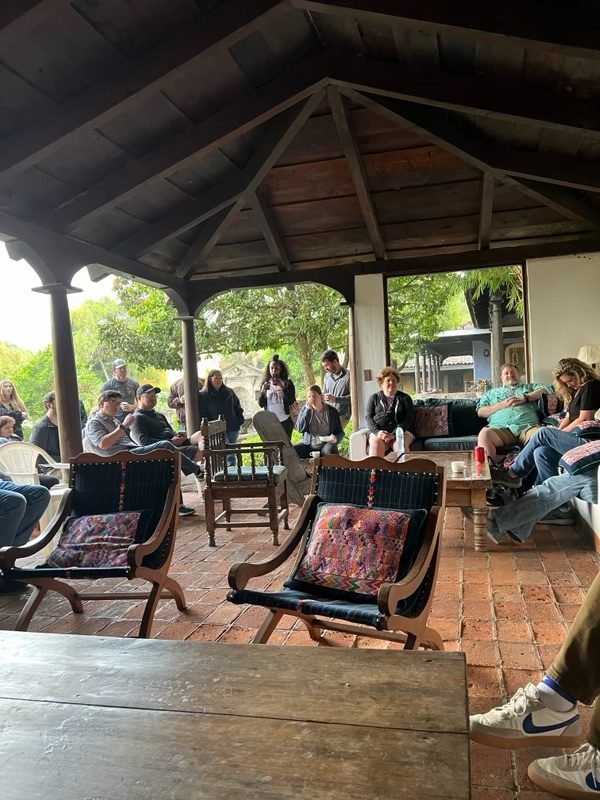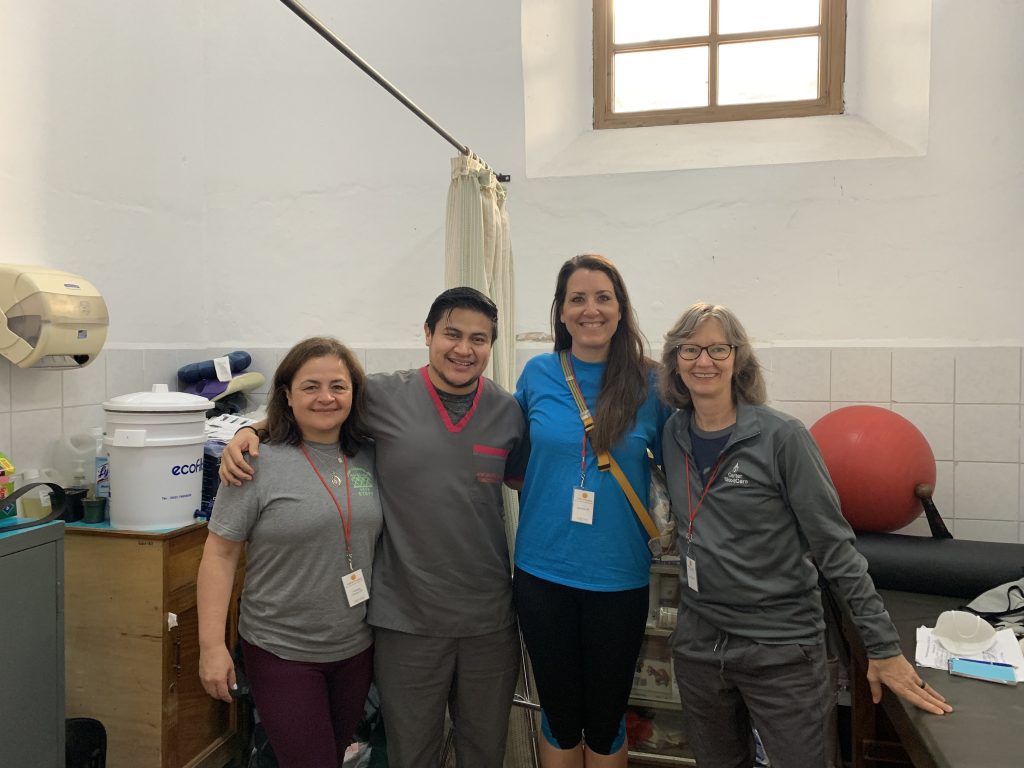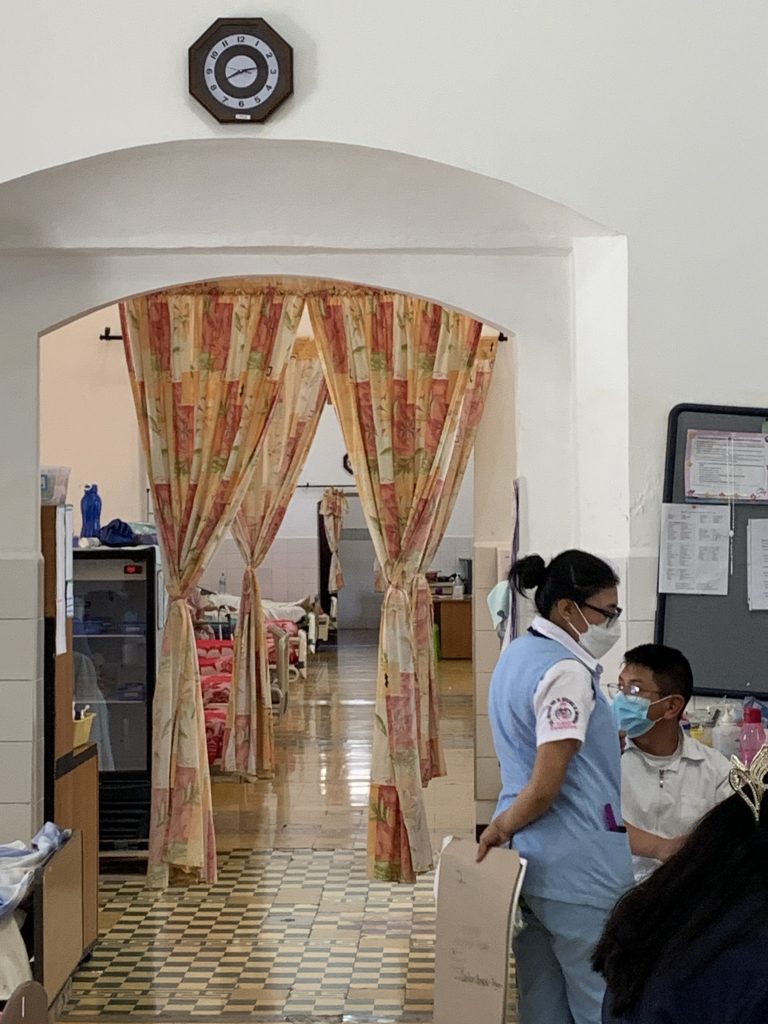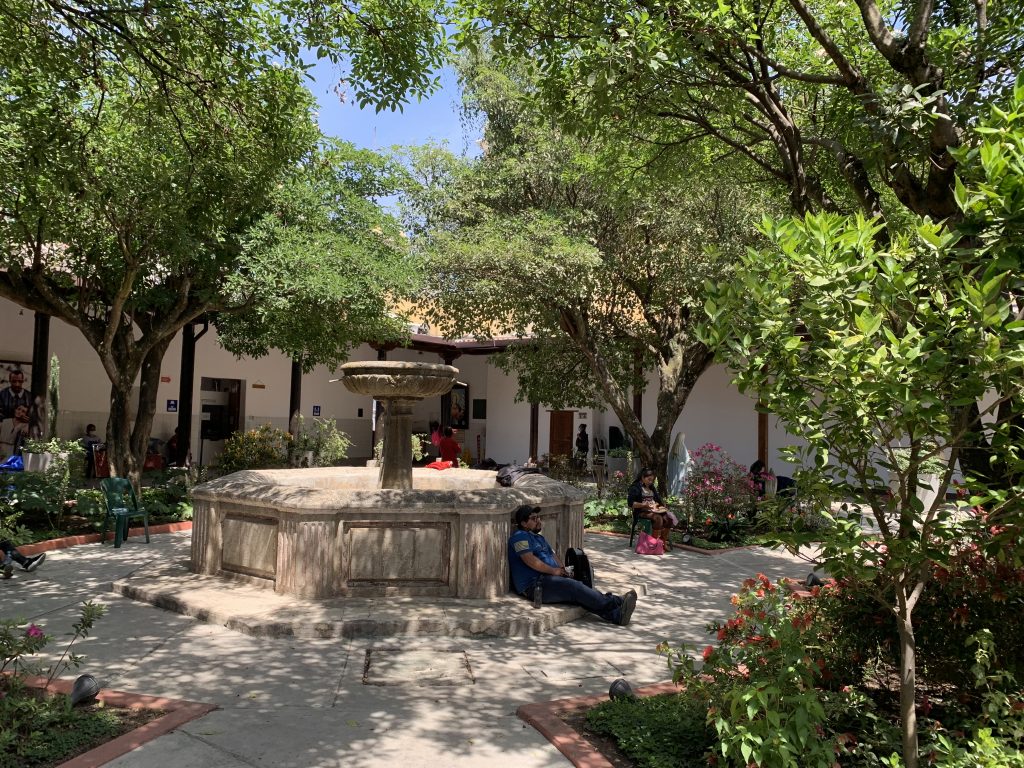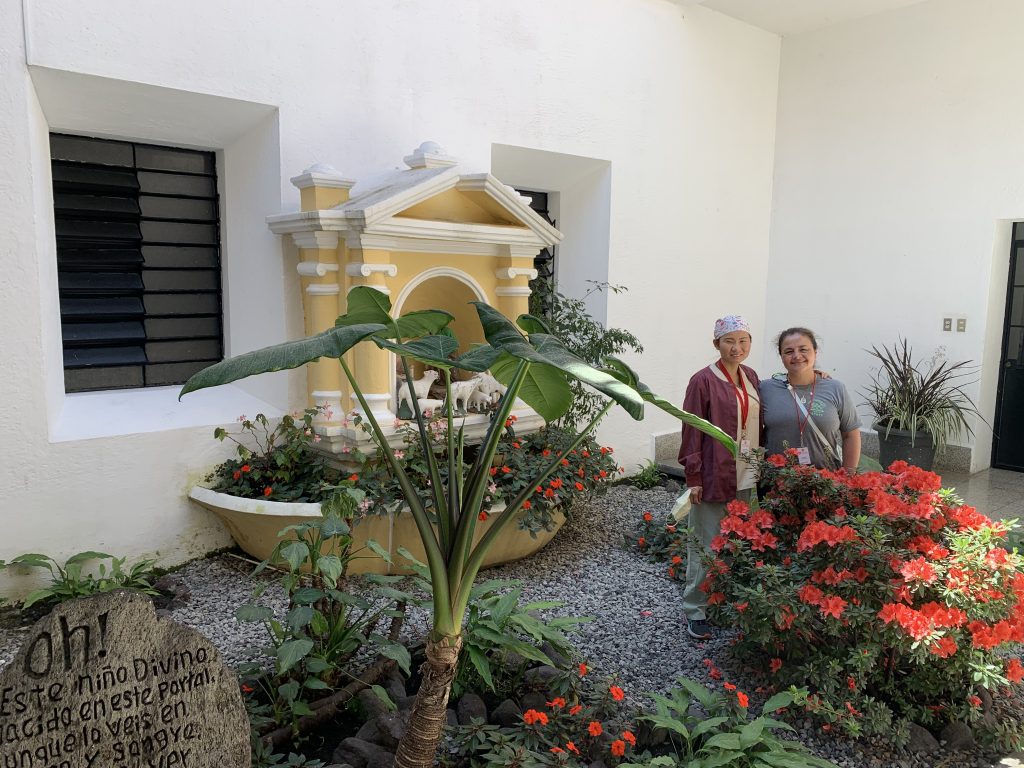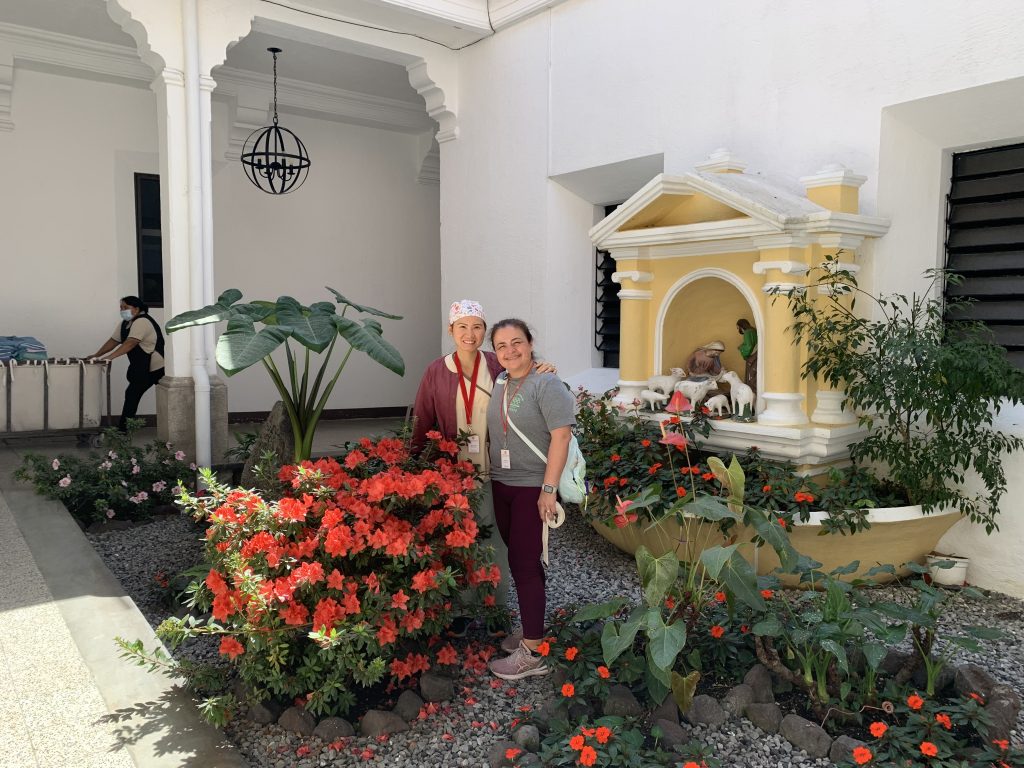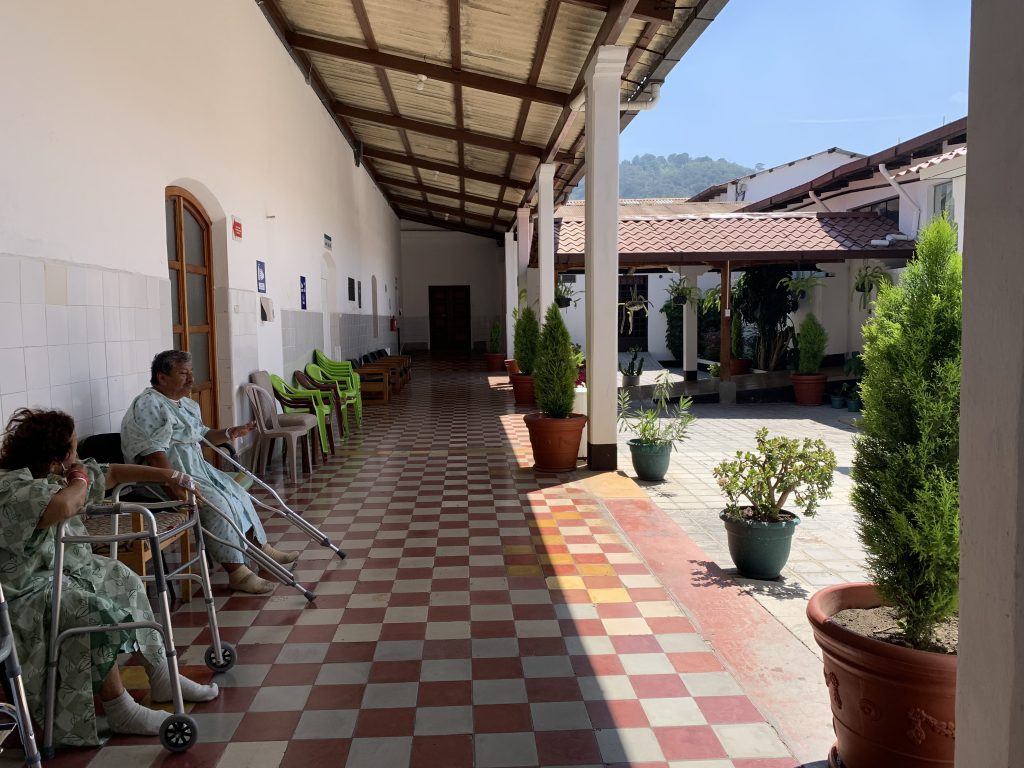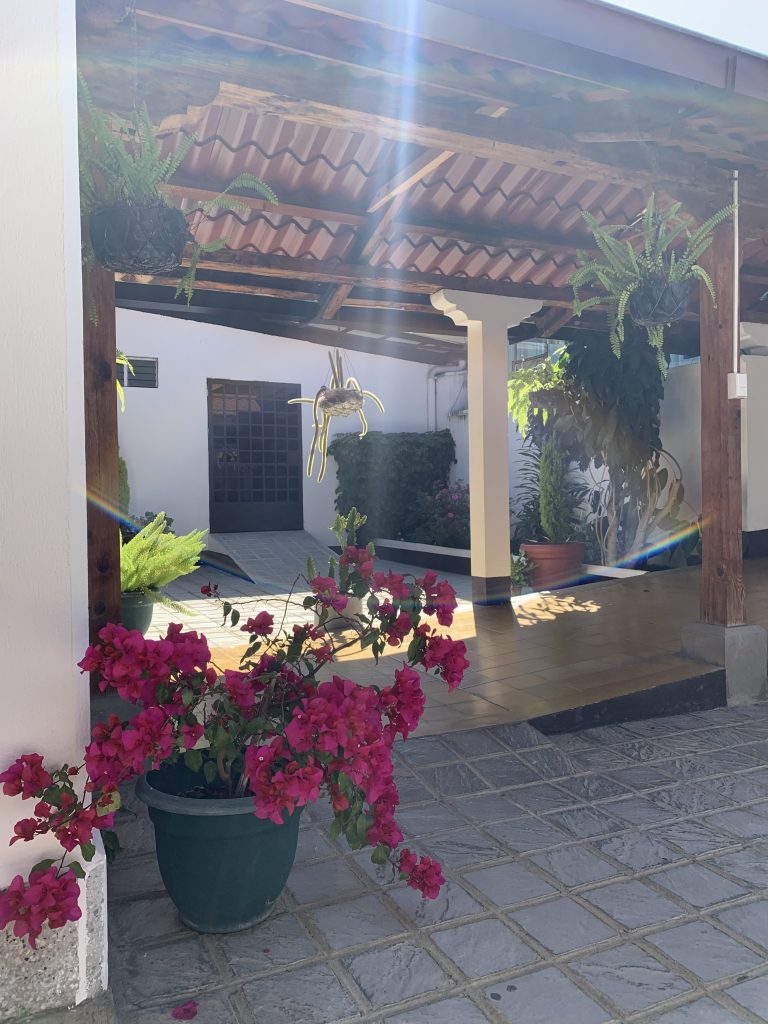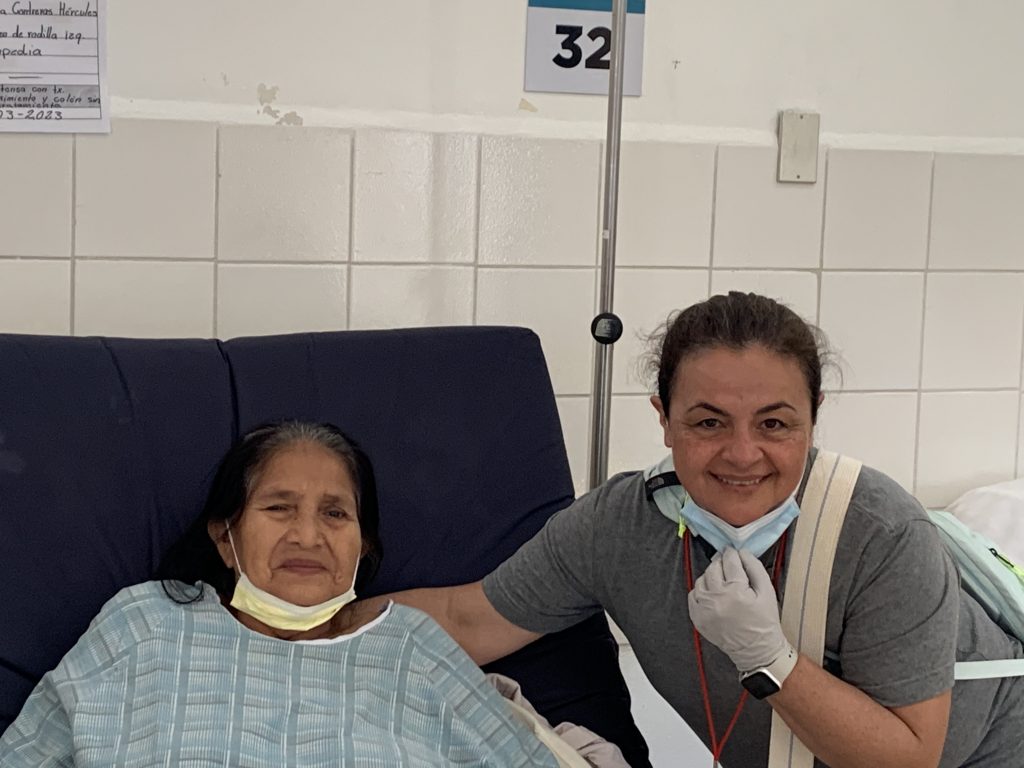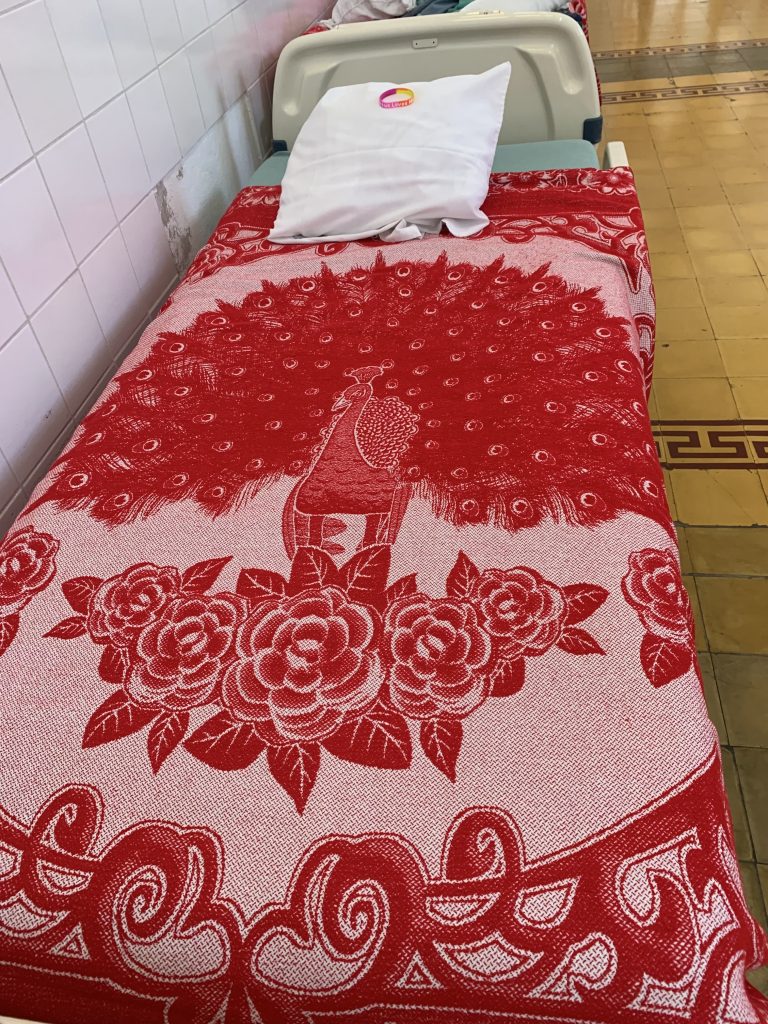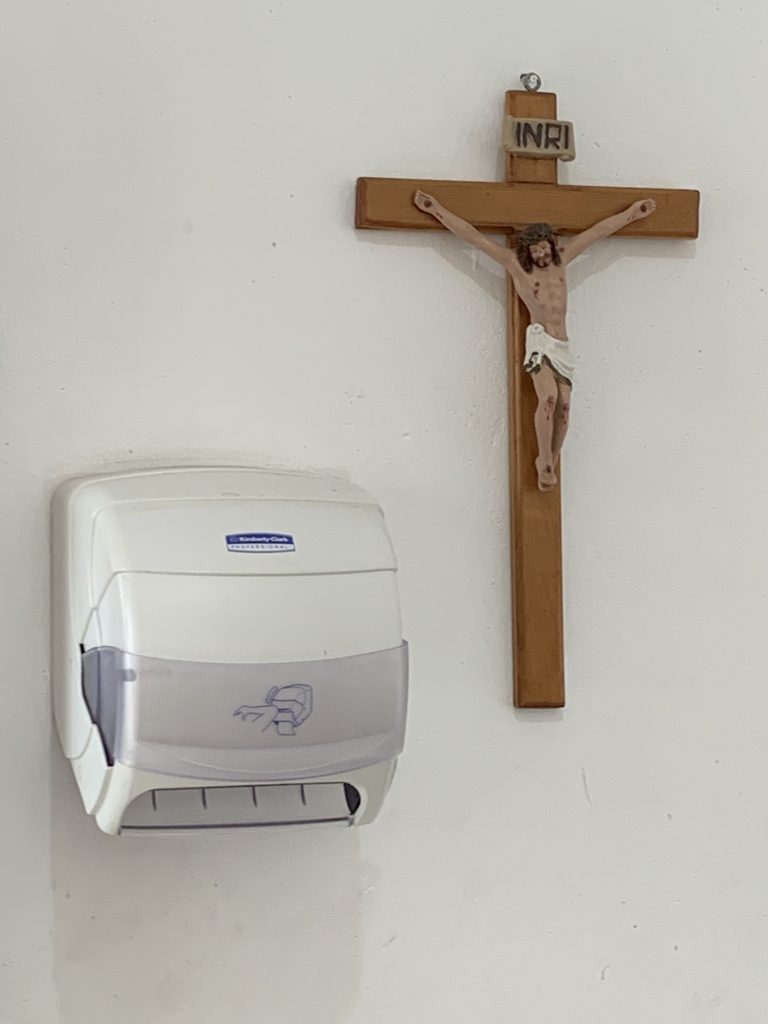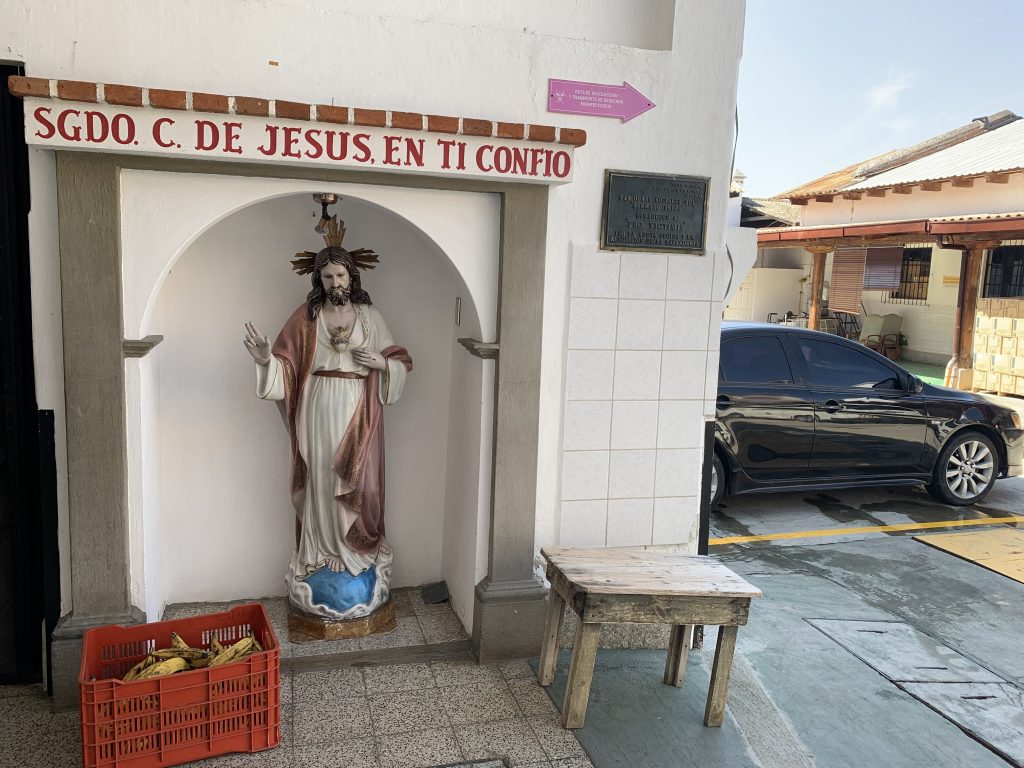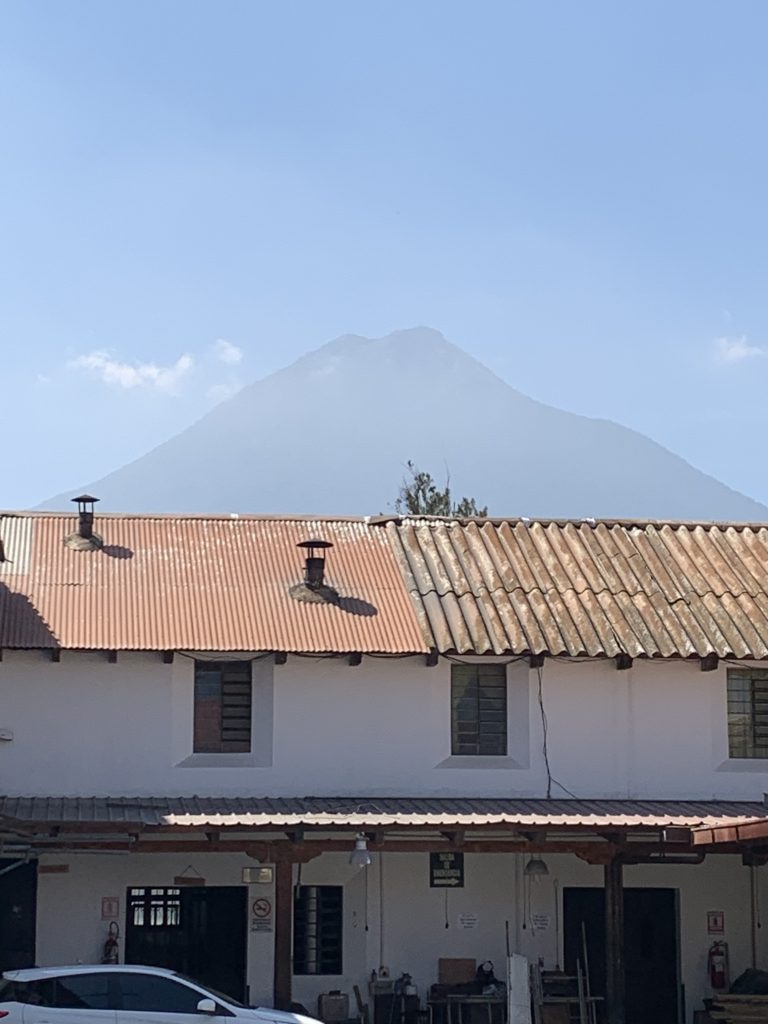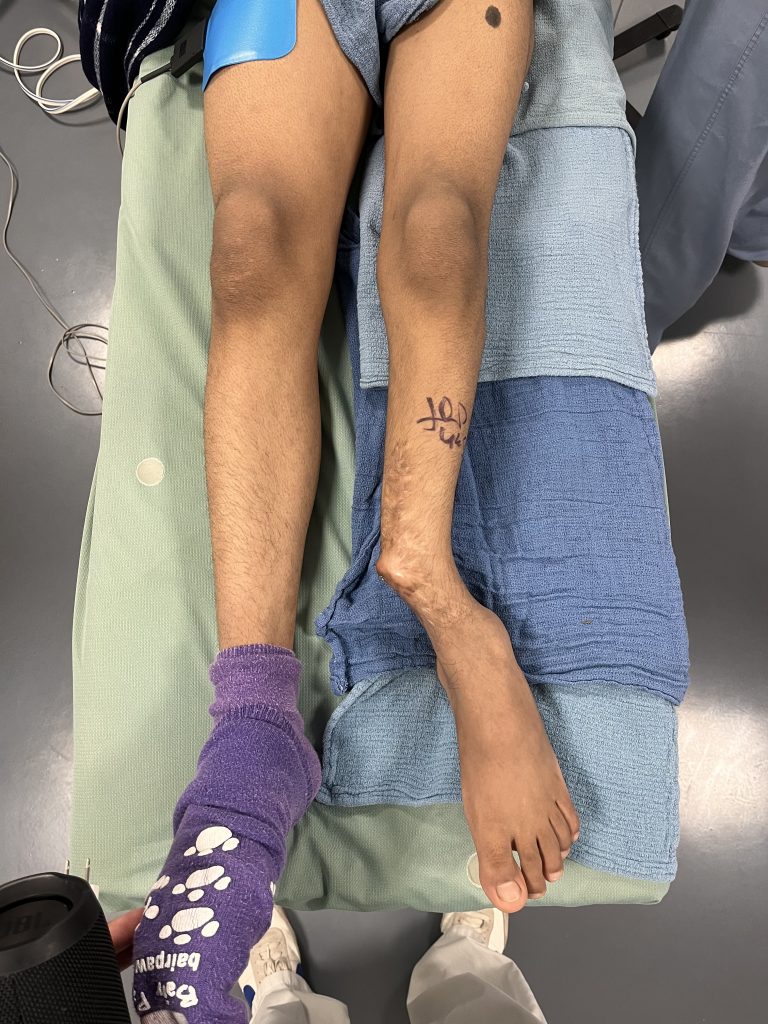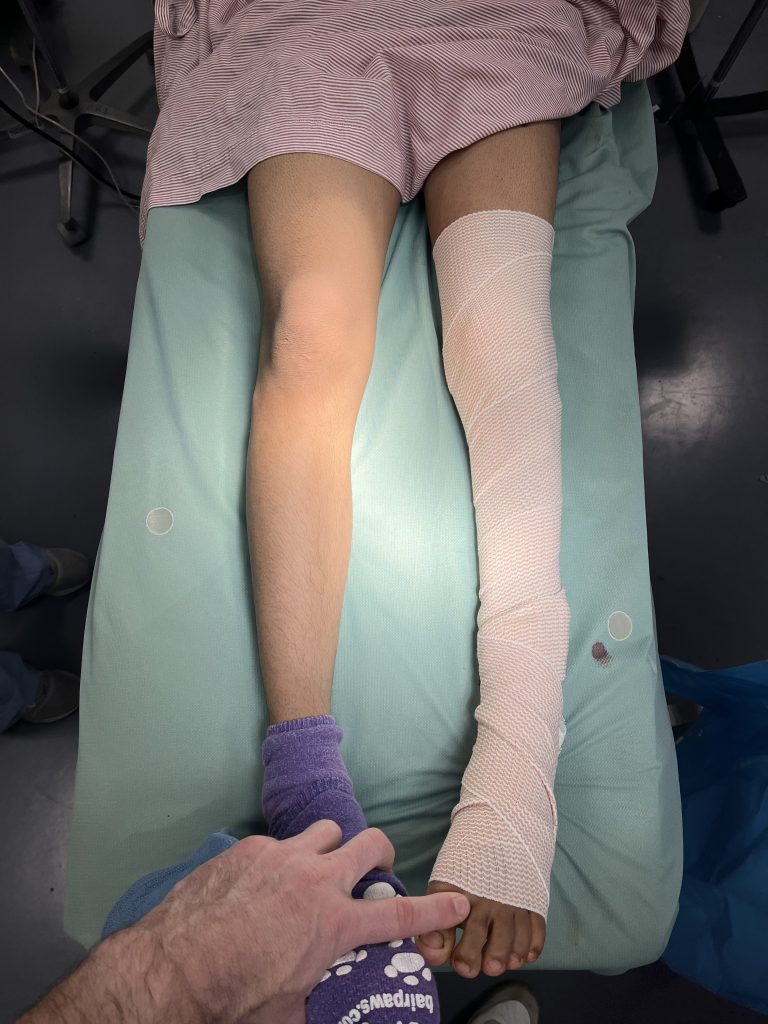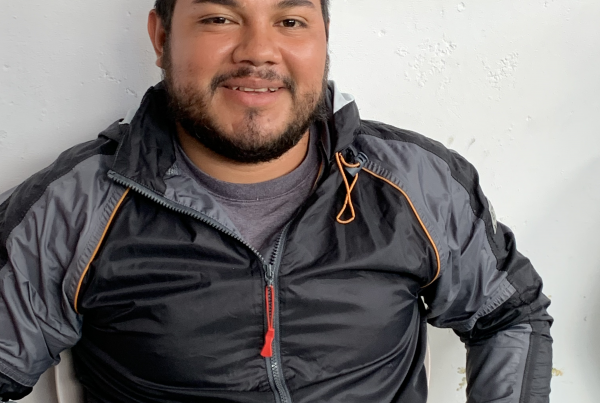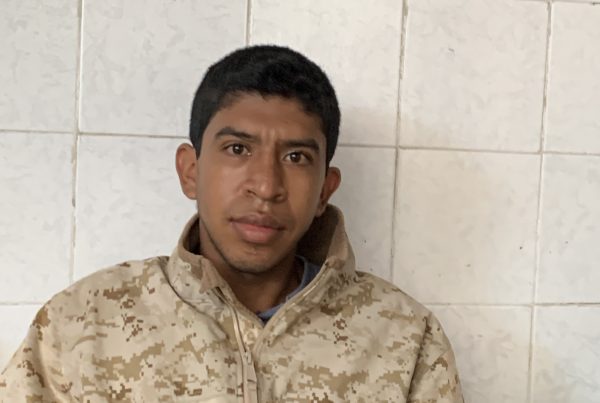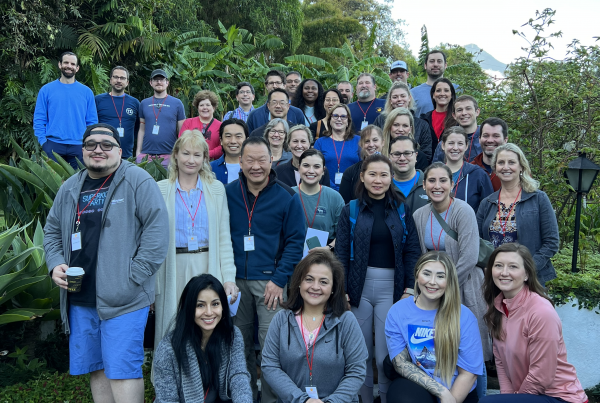This morning, after the team devotional, I dog the footsteps of the physicat therapists as they make their rounds of patients recovering from surgery. Jessi, Consuela and Lori joined the team together from Dallas, Texas, where they have been co-workers at Parkland hospital. They are helping Jose, the only full time PT at the Obras.
Consuela starts in one of the women’s wards, where patients are in beds in big rooms that open into each other. Elda and Merlín both had hip replacements on Tuesday. Today they do their exercises together, while Jose counts out their ankle flexions and leg extensions. Merlín speaks some English, so I am able to exchange a few words with her. Meanwhile, Consuela works with Angelica on knee flexion, aiming for a 90 degree bend. Before surgery, Angelica had not been able to bend her knee for a while, so her muscles are tight. In the fourth corner of the room, two nurses sit at a station that consists of a desk and some supplies. There are no computers except in the main office by the operating rooms. All of the patient records are paper on clipboards.
Three of the walls feature open doorways. The wards open into each other, on around the building, the women’s opening into the men’s around the corner. The interior doorway accedes onto a tiled walkway around a series of courtyards open to the blue sky and fresh air. This courtyard features a collection of potted ferns, evergreens, succulents, bougainvillea, and a hanging cactus with branches like tentacles beckoning patients out into the sunshine. All the wards have old tile floors in eclectic patterns. The oldest black, red and cream pattern is patched here and there with yellow for cream. In other places, orange and yellow tile fill in for red and cream, maintaining the pattern with the closest match on hand at the time of the repair. Pale grey tile goes five feet up the white adobe walls. High ceilings and open windows high up in the walls contribute to the sense of spaciousness. Some sounds of traffic penetrate from the exterior perimeter, but the atmosphere is strikingly peaceful. Some of the doors feature wooden crossbeams. Others are arched. Some of the doors that actually close off rooms are wrought iron, others wood and glass. Mainly there are short, red and yellow curtains gathered and hanging from black iron rods above the doorways. The walkway is covered by a corrugated iron roof held up by exposed wooden beams. Above several of the doorways are colorful crucifixes.
There are no sinks for washing hands in between patients, but Consuela has brought her own hand sanitizer and gloves. There are no TVs, no linoleum, no acrid smell of institutional cleaning products, no dreary fluorescent light. The beds are problematic, with an obsolete design that leaves the lowered guard rail as an obstacle for patients trying to stand up. But the patients seem unfazed by these and other impediments. It’s impossible not to notice the perseverance of these people who have never had easy access to anything.
Angelica gets up and going with a walker, out to the colonnade, up a tiled inclined ramp, step down, turn around, step up. Consuela says that with her U.S. patients, she would still be begging them just to stand up on day three, and Angelica is only day two post-op. Here the patients are not diabetic or obese. They are accustomed to an active lifestyle and tend to have a strong musculature, unless their injuries have immobilized them for a long time.
The next stop is Maura, one of yesterday’s knees. She is 68 years old and lives 2 x 12 hours away: that is, she plans to take a big bus 12 hours to her region. Then she will take a small bus another 12 hours to the village where she lives with her husband. She tells Consuela that there are cobblestones outside her front door, and tile floors inside. She has chickens to feed so is motivated to get back as soon as possible.
Consuela keeps exclaiming, “This would never happen in the States”—referring to how willing and able her patients are to perform all the movements she asks them to attempt. Consuela herself went to PT school in her native Columbia. When she was 22, she visited the U.S. for one year, she thought. But there was such a need for PTs who could speak Spanish that Parkland recruited her to stay and sponsored her Green Card. She says that even though Parkland is a county hospital, far down the spectrum of U.S. institutions in amenities, there’s still no comparison between what they have available and the primitive conditions of the Obras. “We have everything,” she says of her U.S. environment.
Through a doorway I catch sight of Dominga, the lady who received the pain block yesterday. She is exiting the bathroom by herself, managing her walker with, in addition, her roll of toilet paper in one hand.
A glance into a couple of bathrooms reveals that they too are an obsolete design. There is insufficient space for the walkers to fit in front of the toilets. In addition to bigger bathrooms, the Obras needs an ice machine so that all these patients can ice their surgical sites post-op. Routinely they receive just anti-inflammatories and Tramadol post-op, and no ice. Jose, the in-house PT would also like to see a warren of small rooms remodeled into an open exercise space for the patients.
There is nothing close to privacy, but also nothing close to loneliness in this place. The exception is Jeaquelin, the 29 year-old woman with rheumatoid arthritis whose knee got infected. Her medications leave her immunosuppressed. When her knee got infected, she had to be moved to a small room by herself, so as to reduce the risk of the infection spreading to other patients. She has spent five weeks in the Obras, the past two in isolation. For fifteen days she has had nothing to look at but a budget crucifix mounted next to a paper towel dispenser. If her blood culture comes back negative, she will finally be able to go home, taking a Cipro prescription with her. Jacquie’s room is open to the courtyard where the trucks unload. When she gets up and out with her walker, she can sit in a neon green plastic chair, in the company of the Divine Mercy Jesus between the crate of bananas and the extra table. Over the rooftop in the distance rises the famous Agua Volcano.
Meanwhile, the last day of surgery is going strong. Juan, the 17 year-old with the grotesquely warped foot from a terrible mal-union subsequent to a motorcycle accident is getting straightened out in Room One.
Walter, another motorcycle knee patient says hello to me from the corner of a men’s ward where Consuela is working with Marvin. Above one of the open doorways is a clock that says 8:20 at 10:40 a.m., but no one is troubling in the least to consult it.
Usbaldo is getting an amputation of his right lower limb. Elvy the veteran is getting a left knee replacement. Mayra and Mirza are getting knees. So are Lidia and Hortencia. Ligia, another rheumatoid arthritis patient is getting arthrodesis, osteotomy and transposition in her hand.
If I had the budget to fix this place up, I would start by enlarging the bathrooms so that the patients do not have to climb around the toilets without their walkers. I would add sinks somewhere for handwashing, or at least install sanitizer dispensers. And, while fixing the plumbing, why not get the old fountains flowing again, so that the cantata of water can mingle with the chirping of birds in the large entrance courtyard? Water could spout again from angels’ mouths outside the recovery wards as patients take their first post-op steps.
But with all the money in the world, I would not erase the eclectic tile floors, with their narrative of many, many repairs and much making do with whatever is on hand. I would just restore the pattern where it has been hideously erased in sections where nothing could be found for several square feet but a grim gray-brown. The project could be funded by opening up a room for burnt-out Americans. I feel sure that many First World ills could be healed by some time spent in the tile walkways, chatting with friendly, resilient Guatemalans happy to practice their English in the peaceful courtyard colonnade. We have the money. They have the grace.
-Courtney Kim
To view Courtney’s personal blog visit: www.courtneyguestkim.com
To support this team and their commitment to our patient’s visit:


